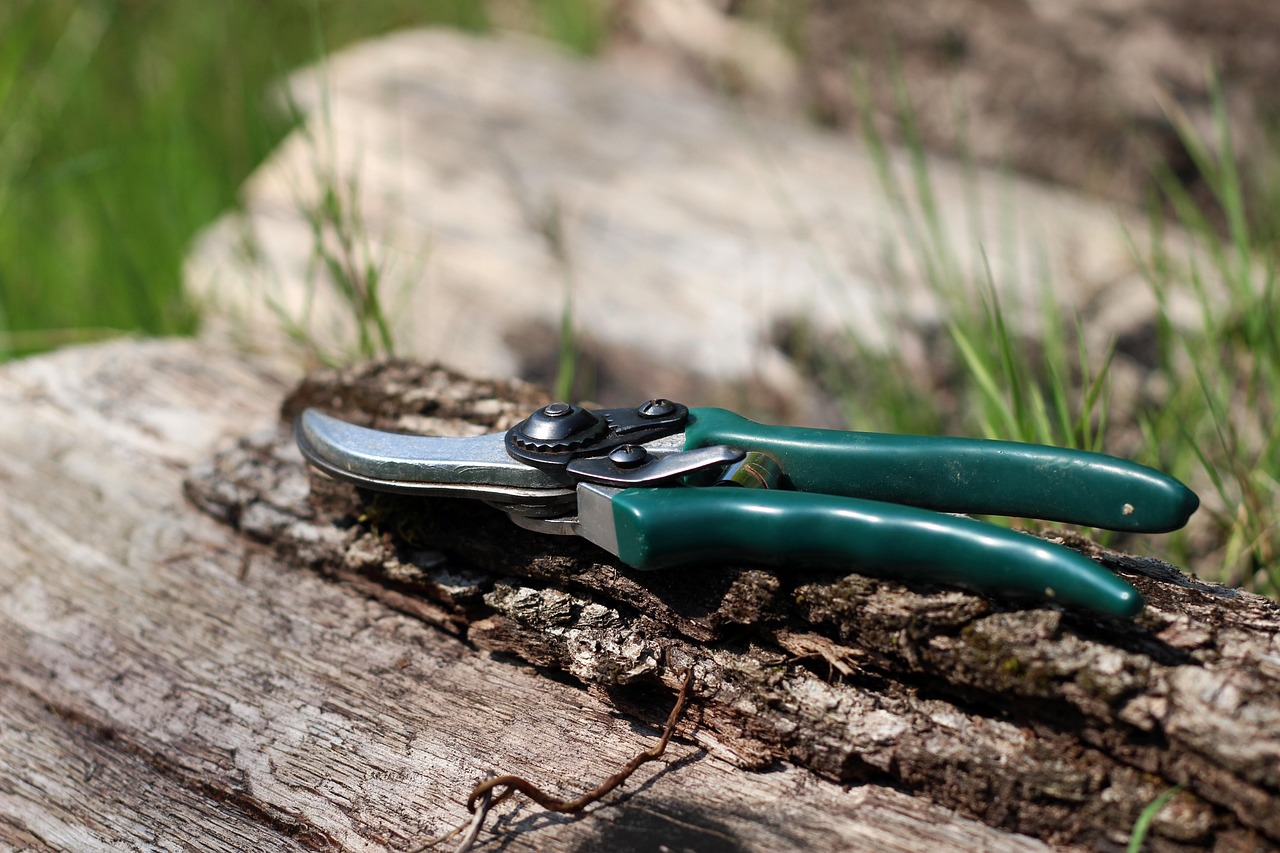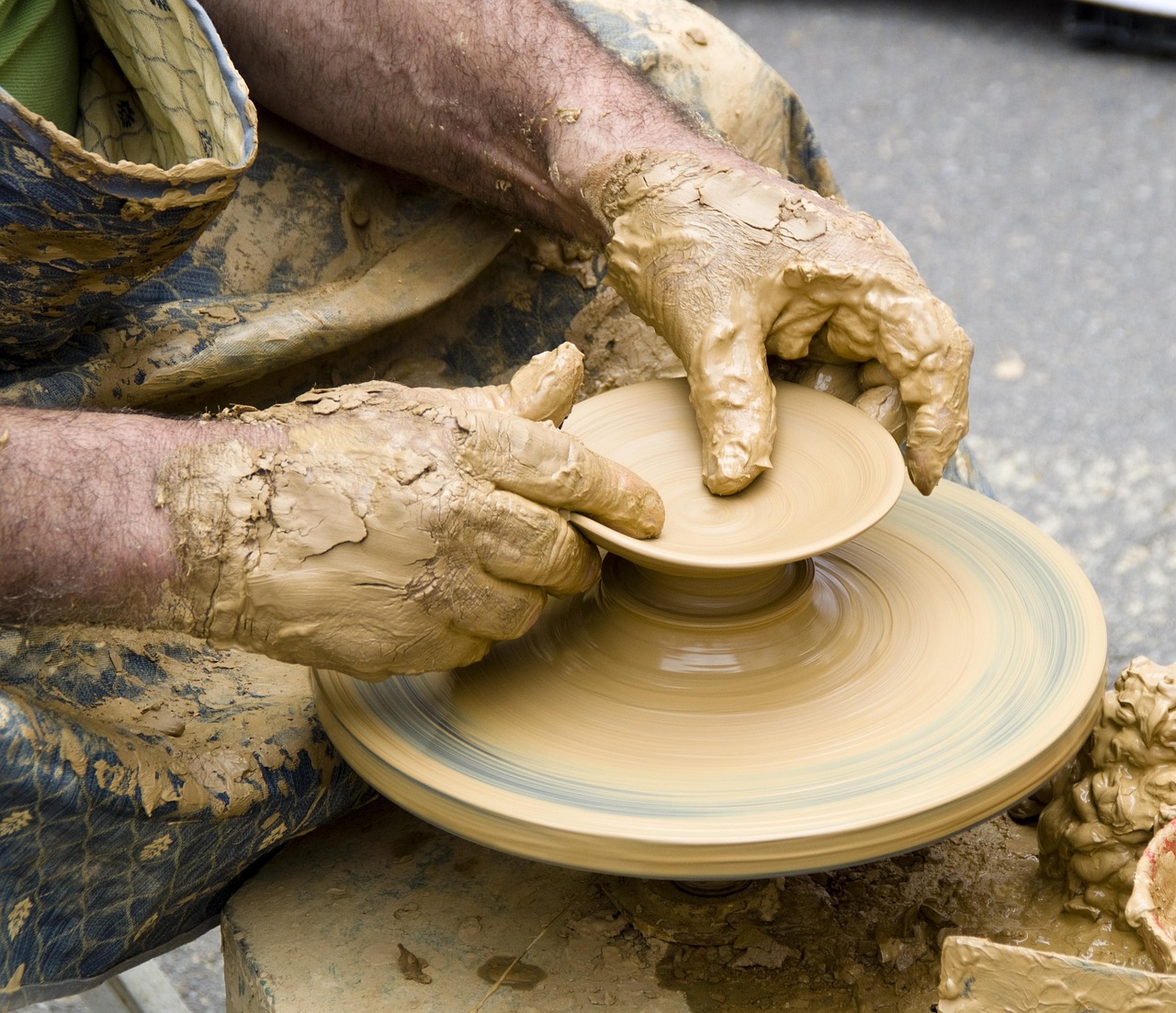Pruning techniques are essential for maintaining healthy trees in any landscape. They help improve tree structure, enhance growth, and ensure safety by removing dead or diseased branches. Understanding the right methods can significantly impact the overall health and appearance of your trees.
Tree pruning is a vital practice in horticulture. It involves the selective removal of certain parts of a tree, such as branches, buds, or roots. The primary goals of pruning include promoting healthy growth, improving air circulation, and enhancing light penetration. Additionally, pruning can shape trees for aesthetic appeal and safety in urban environments.

Different techniques cater to various objectives and tree types. Basic techniques include thinning, heading, and reducing. Each technique serves a specific purpose and should be applied based on the tree’s species and its specific growth requirements.
Understanding Pruning Techniques
Before diving into the different techniques, it is important to understand some fundamental concepts that guide effective pruning. Proper timing, tools, and methods can make a significant difference in the results.
- Timing: The best time to prune most trees is during their dormant season, typically late winter to early spring. This minimizes stress on the tree and reduces the risk of disease.
- Tools: Essential tools for pruning include hand pruners, loppers, and saws. Using sharp tools ensures clean cuts that promote healing.
- Techniques: Different techniques can be applied depending on the desired outcome.
Key Pruning Techniques
Several key pruning techniques are used to achieve various goals. Each technique should be performed with care to avoid damaging the tree. Here are some of the most common methods:

Thinning
Thinning involves removing selected branches to reduce density. This technique helps improve air circulation and light penetration within the tree’s canopy. Thinning encourages healthier growth and reduces the risk of disease. It is especially beneficial for fruit trees and ornamental trees.
Heading
Heading is a technique where the ends of branches are cut back to a bud or lateral branch. This method promotes bushier growth and can be used to shape a tree. Heading should be done cautiously, as excessive heading can lead to weak growth and increased susceptibility to pests.
Reducing
Reducing involves cutting back a branch to a specific height or width. This technique is often used to control the size of a tree while maintaining its natural shape. Reducing is particularly useful for trees that have outgrown their space in urban settings.

Benefits of Pruning
The benefits of regular pruning extend beyond aesthetics. Healthy trees contribute to environmental stability and community well-being. Here are some of the key advantages:
| Benefit | Description |
|---|---|
| Improved Health | Removing dead or diseased branches promotes better overall health for the tree. |
| Enhanced Growth | Pruning encourages new growth by allowing more light and air to reach the inner branches. |
| Safety | Cuts down the risk of falling branches that could injure people or damage property. |
| Aesthetic Appeal | Pruned trees can enhance the beauty of landscapes and gardens. |
Caring for trees through pruning not only fosters a beautiful landscape but also contributes to biodiversity. Healthy trees provide habitats for various wildlife species. Additionally, they play a crucial role in improving air quality and reducing urban heat islands.
Understanding your specific landscape needs is essential when planning pruning activities. Different species may require different approaches, and local environmental conditions can also influence pruning schedules and techniques.

Common Mistakes in Pruning
<pDespite its benefits, many people make mistakes when pruning trees. Some common errors include:
- Over-pruning: Removing too much foliage can stress a tree and inhibit growth.
- Poor Timing: Pruning at the wrong time can expose trees to diseases.
- Improper Cuts: Making incorrect cuts can lead to injury and slow healing.
Avoiding these mistakes requires knowledge of proper techniques and ongoing education about tree care. Seeking advice from professionals can also help ensure that pruning is done effectively.
As you consider pruning your trees, remember that each technique has its purpose. A thoughtful approach will lead to healthier trees and a more vibrant landscape in any setting.
Pruning Techniques for Specific Tree Types
Understanding the specific needs of different tree species is crucial for effective pruning. Each type of tree has its own growth patterns, making it essential to apply the appropriate techniques tailored to their unique characteristics. Here are some common tree types and the recommended pruning approaches for each.
Fruit Trees
Fruit trees require careful pruning to achieve optimal fruit production and maintain health. The key objectives include shaping the tree, removing dead branches, and encouraging new growth.
- Timing: Prune fruit trees during their dormant season, typically in late winter or early spring.
- Technique: Use thinning cuts to remove weak or crowded branches, allowing more light to reach the center of the tree.
- Shaping: Maintain an open center structure to promote airflow and sunlight exposure.
Deciduous Trees
Deciduous trees shed their leaves annually and may require different pruning techniques based on their growth habit.
- Timing: Late winter is ideal for most deciduous trees.
- Technique: Focus on thinning and reducing to maintain shape and remove any dead or diseased branches.
- Safety Considerations: Be cautious of branches that could pose a risk to structures or power lines.
Coniferous Trees
Coniferous trees, such as pines and spruces, have unique growth habits. Their needles can be affected by improper pruning.
- Timing: Late spring is often best for pruning conifers.
- Technique: Lightly prune to avoid removing too many needles. Focus on removing dead or damaged branches.
- Caution: Avoid cutting back into the older wood, as it may not regenerate new growth.
The Right Tools for Pruning
Using the correct tools is essential for efficient and effective pruning. High-quality tools help ensure clean cuts, which promote better healing and reduce the risk of disease. Here are some commonly used tools along with their purposes:
| Tool | Description | Best Use |
|---|---|---|
| Hand Pruners | A small, handheld tool used for cutting small branches and stems. | Ideal for delicate pruning tasks, such as snipping flower stems and small branches. |
| Loppers | A larger tool with long handles designed for cutting thicker branches. | Best for branches up to 1-2 inches in diameter. |
| Saws | A tool for cutting larger branches that cannot be handled by pruners or loppers. | Used for branches thicker than 2 inches or for shaping larger trees. |
| Pole Pruners | A tool with an extendable handle, allowing access to high branches. | Perfect for pruning tall trees without the need for a ladder. |
Safety Precautions When Pruning
Pruning can present various safety risks. Taking precautions is essential to protect yourself and others while performing this task. Here are some important safety tips:
- Wear Protective Gear: Always wear gloves, safety goggles, and sturdy shoes to protect against cuts and falling debris.
- Use Ladders Carefully: If using a ladder, ensure it is stable and positioned on level ground. Have someone hold it for added safety.
- Avoid Power Lines: Always be aware of the location of power lines when pruning trees. Maintain a safe distance from them.
- Know Your Limits: If a job seems too difficult or dangerous, consider hiring a professional arborist.
Sustainable Pruning Practices
Incorporating sustainable practices into your pruning routine can enhance tree health and contribute positively to the environment. Here are some tips for sustainable pruning:
- Compost Debris: Instead of discarding pruned branches and leaves, consider composting them to enrich your soil.
- Avoid Chemical Treatments: Limit the use of chemical treatments post-pruning. Focus on natural solutions to promote healing and prevent disease.
- Support Local Wildlife: Leave some dead wood in place when safe; it can provide habitat for various wildlife species.
Sustainable pruning not only benefits your landscape but also supports local ecosystems. By being mindful of your practices, you can create a healthier environment for both trees and wildlife.
Understanding the intricacies of tree pruning allows you to care effectively for your landscape. By employing the right techniques and tools, you can ensure healthy growth, safety, and aesthetic appeal in your outdoor spaces. The knowledge gained here will empower you to tackle your pruning tasks with confidence and skill.
Seasonal Considerations for Pruning
Understanding the seasonal variations in tree care and pruning is essential for optimal results. Different tree species respond uniquely to pruning at various times of the year. Here, we will explore the best practices for pruning during different seasons and how they affect tree health.
Spring Pruning
Spring is often considered the most critical time for pruning certain types of trees. As trees begin their active growth phase, strategic pruning can enhance their health and shape.
- Timing: Ideal for trees that bloom in summer, as pruning before their growth spurt allows them to focus energy on new shoots.
- Technique: Focus on removing any dead or damaged branches. This encourages healthy new growth and flowering.
- Considerations: Be cautious with spring-flowering trees, as pruning too late may remove next season’s blooms.
Summer Pruning
Summer pruning is often less common but can be beneficial in controlling tree size and shaping. It is especially useful for younger trees that require formative pruning.
- Timing: Late spring to mid-summer is ideal for this type of pruning.
- Technique: Use heading cuts to manage growth and maintain the desired shape.
- Benefits: Reduces the density of foliage, allowing more sunlight to reach inner branches.
Fall Pruning
Fall can be a tricky time for pruning. While many trees still have their leaves, it is essential to understand how fall pruning affects tree health.
- Timing: Best done after leaves have fallen, which indicates the tree is entering dormancy.
- Technique: Focus on removing dead or diseased wood. Avoid heavy pruning, which can stress trees as they prepare for winter.
- Caution: Pruning in the fall can expose trees to injury from cold weather if not done carefully.
Winter Pruning
Winter is often the most recommended time for pruning deciduous trees because they are dormant. This allows for clear visibility of the tree’s structure.
- Timing: Late winter is preferable as it avoids the risk of freezing temperatures affecting cuts.
- Technique: Use thinning cuts to remove crowded branches and improve air circulation.
- Benefits: Promotes vigorous growth in spring and helps prevent disease by reducing the number of potential entry points for pathogens.
Advanced Pruning Techniques
For those looking to delve deeper into tree care, there are advanced pruning techniques that can address specific issues or enhance particular attributes of a tree.
Crown Raising
Crown raising involves removing lower branches of a tree to increase clearance. This technique is particularly useful for creating space beneath a tree or enhancing visibility.
- Technique: Gradually remove lower branches from the trunk, maintaining a natural appearance.
- Considerations: Ensure not to remove too many branches at once, as this could stress the tree.
Crown Thinning
Crown thinning reduces the density of the canopy, improving light penetration and air circulation throughout the tree.
- Technique: Selectively remove branches throughout the crown without altering its overall shape.
- Benefits: Reduces wind resistance and lowers the risk of branch breakage during storms.
Crown Reduction
This technique involves reducing the height or spread of a tree’s canopy while maintaining its natural shape. It is commonly used when trees are too tall or wide for their location.
- Technique: Cut back branches to lateral buds or smaller branches that can support new growth.
- Cautions: Avoid cutting back too dramatically, as this can lead to stress and poor recovery.
The Importance of Aftercare
Aftercare is an essential aspect of effective pruning. Proper care following pruning can enhance healing and promote healthy growth. Here are key aftercare practices:
- Avoid Watering Stress: Ensure trees receive adequate water after pruning, especially during dry periods, to help them recover.
- Monitor for Pests: Keep an eye on your trees for signs of pests or diseases following pruning. Early detection can prevent serious issues.
- Avoid Fertilization Immediately After Pruning: It’s best to wait until a tree shows signs of new growth before applying fertilizer, as this can stimulate further growth stress.
Professional Pruning Services
If you feel unsure about your ability to properly prune your trees or if they require extensive work, consider hiring a professional arborist. Professional services offer several advantages:
- Expertise: Professionals have extensive training and knowledge about various tree species and proper techniques.
- Safety: They are equipped to handle large or dangerous trees safely, minimizing risks associated with high branches or power lines.
- Health Assessment: An arborist can evaluate the overall health of a tree and provide recommendations beyond pruning.
Investing in professional pruning services can help ensure your trees thrive while maintaining safety in your landscape. Whether you choose to prune your trees yourself or seek professional help, understanding these techniques will guide you toward healthier, more beautiful trees in your landscape.
Maintaining Your Landscape Post-Pruning
After you have pruned your trees, it’s essential to take steps to maintain your landscape. Proper aftercare and maintenance practices will ensure that your trees not only recover well from pruning but also continue to thrive in the long term.
Regular Monitoring
Keeping an eye on your trees after pruning is crucial. Regular monitoring can help you catch any issues early. Here are some key aspects to pay attention to:
- Growth Patterns: Observe how the tree responds to pruning. Look for new growth and ensure that it is healthy.
- Pest Activity: Watch for signs of pests or diseases. Early intervention is vital for maintaining tree health.
- Structural Integrity: Check for any branches that may appear weak or at risk of breaking.
Watering and Nutrition
Proper watering and nutrition are essential following pruning. Trees can experience stress from losing foliage, so supportive care helps with recovery.
- Watering: Ensure that your trees receive adequate water, especially during dry spells. Deep watering promotes healthy root growth.
- Fertilization: Wait until you see signs of new growth before applying fertilizer. Use a balanced fertilizer suited for your specific tree type.
Mulching
Applying mulch around the base of your trees can significantly benefit their health. Mulch helps retain soil moisture, regulate temperature, and suppress weeds.
- Type of Mulch: Organic mulches, such as wood chips or bark, are ideal as they decompose over time and enrich the soil.
- Application: Spread a layer of mulch about 2-4 inches thick, but avoid piling it against the trunk to prevent rot.
Common Tree Diseases and Pests to Watch For
Post-pruning, it’s essential to be aware of common diseases and pests that may affect trees. Understanding these potential threats allows for timely treatment and prevention.
| Disease/Pest | Description | Treatment |
|---|---|---|
| Powdery Mildew | A fungal disease that appears as a white powdery substance on leaves. | Apply fungicides as directed. Improve air circulation around the tree. |
| Aphids | Small insects that suck sap from leaves, causing them to curl or yellow. | Introduce beneficial insects like ladybugs or use insecticidal soap. |
| Canker Diseases | Infection that leads to sunken areas or lesions on branches. | Prune affected areas and apply appropriate fungicides. |
| Spider Mites | Tiny pests that cause stippling on leaves and may produce webbing. | Hose down the tree with water or apply miticides if infestations are severe. |
Community and Environmental Benefits of Pruning
Understanding the broader impact of tree pruning goes beyond individual tree health. Pruning contributes positively to community landscapes and environmental health.
- Urban Canopy: Healthy, well-pruned trees contribute to a robust urban canopy, improving air quality and providing shade.
- Biodiversity: Pruned trees can support local wildlife by creating habitats while maintaining the tree’s health.
- Aesthetic Value: Well-maintained trees enhance the beauty of neighborhoods, potentially increasing property values.
Final Thoughts
Effective pruning techniques are essential for maintaining the health and beauty of trees in any landscape. By understanding the specific needs of different tree species, employing proper techniques, and being aware of seasonal variations, you can ensure your trees flourish. Regular maintenance, monitoring for pests, and applying aftercare practices are equally important to support recovery and growth after pruning.
Whether you decide to prune your trees yourself or hire a professional arborist, having the knowledge of these techniques will empower you to make informed decisions for your landscape. Remember that healthy trees contribute significantly to environmental sustainability and community well-being. As you continue to care for your trees, you invest not only in their future but also in the overall health of the ecosystem around you.
In conclusion, embracing sustainable pruning practices will lead to vibrant landscapes that enhance both your property and the environment. With dedication and care, you can cultivate a thriving outdoor space that benefits both people and nature alike.
